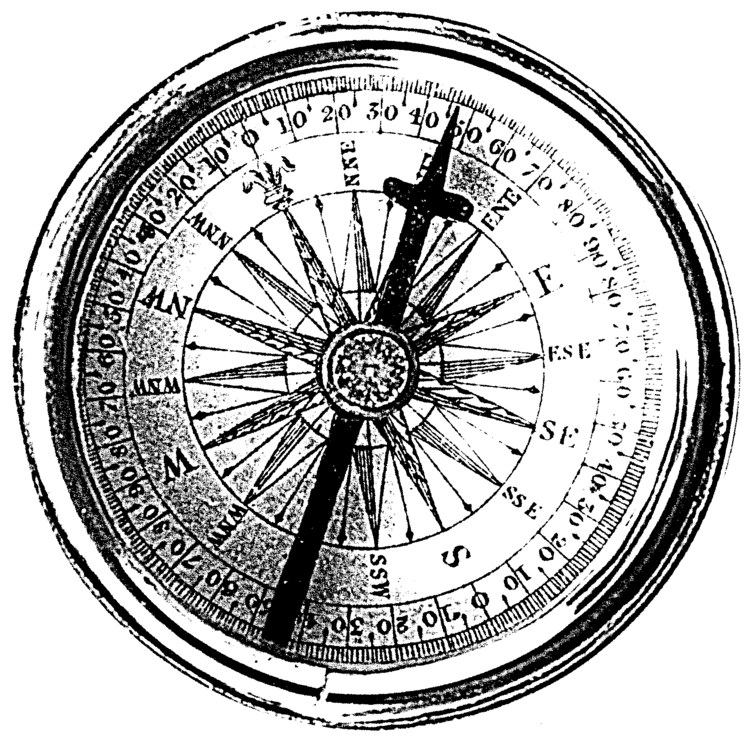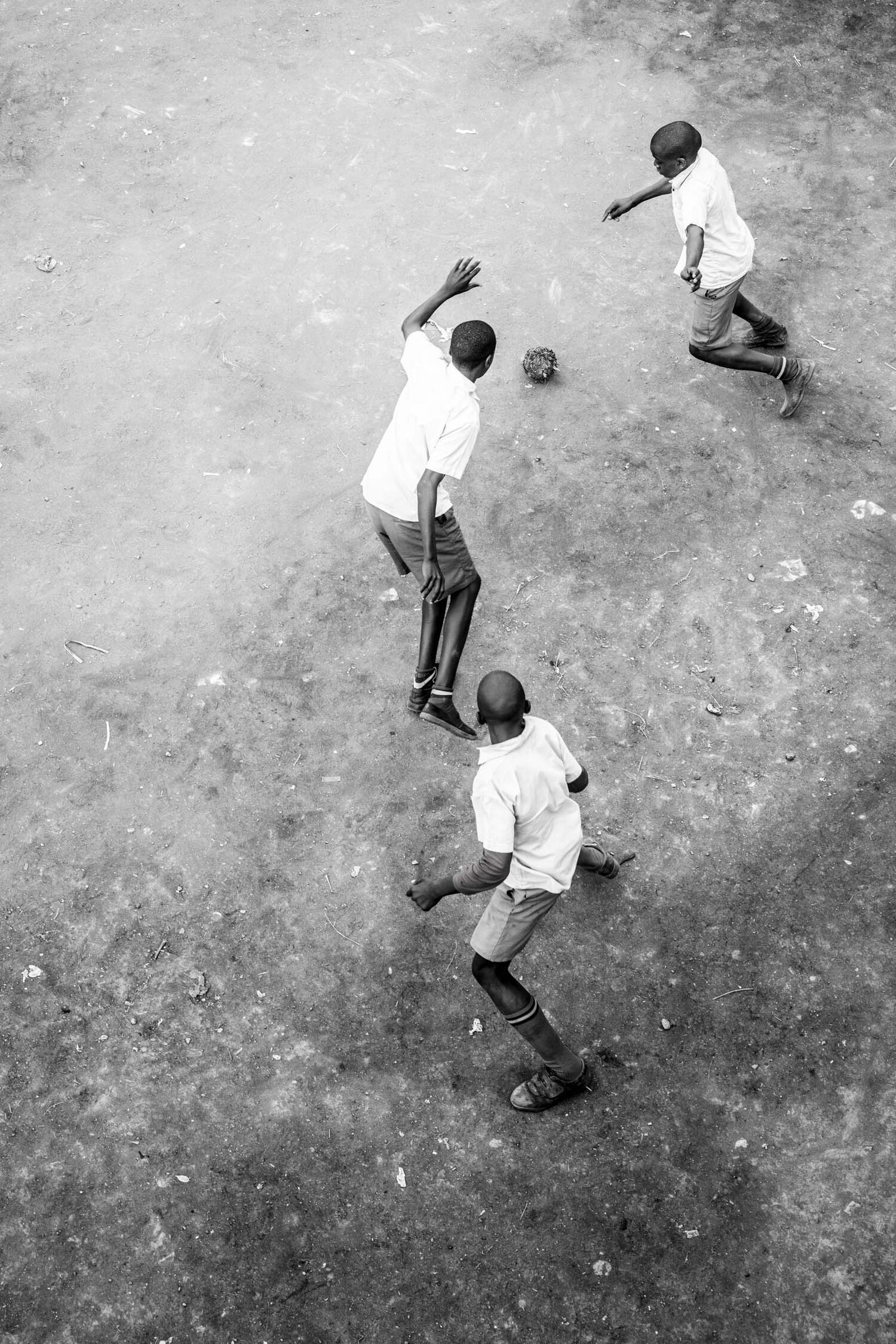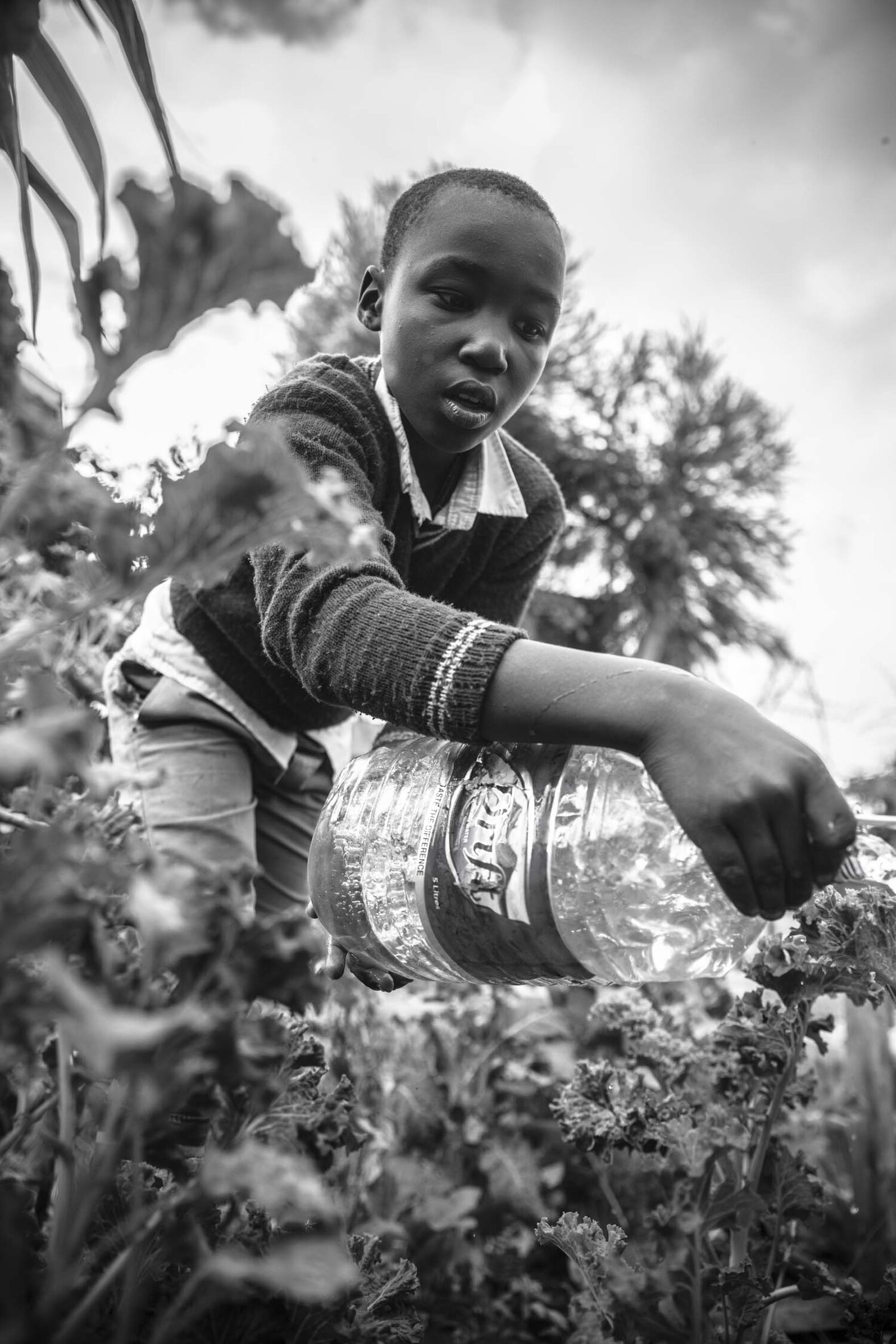Florence lives in the bad part of Mukuru. The good part, across the other side of the Ngong River, has the usual problems of urban slums on every continent. Overcrowding, sexual abuse, non-existent sewerage, criminal violence, tuberculosis, malnourishment and HIV infection. The bad part known as Viwandani, has all these issues and one more. If it rains for a couple of days in a row, a thin slurry rises from the ground and flows over the doorsteps of the residents and into their 3m x3m corrugated iron homes. The slurry has a shiny, bubbly green-blue film and is partly human sewage, partly chemical waste, and partly just mud from the swamp on which this part of Mukuru is built.
Florence has just finished emptying her home of the latest inflow with a bucket and a rag. She is a striking woman with a shock of hair flying back off her high forehead and an elegant angular face. She lives here in the slum with her three children, a baby girl and older twins. (twins are rare in Mukuru as they often don’t survive infancy, let alone childbirth.) There is no mention of a husband. She looks into the camera with an unexpected confidence. I suppose she has nothing left to hide.
The air is filled with the smell of faeces, burning plastic and the sound of booming Kenyan reggae from the next-door home, but still she pays 15000 Kenyan Shillings (about $21 AUD) a month rent for her nine square meters of dirt. It’s not really clear where this money goes but it’s certainly not to a official agency . If you’re two days late with your rent, your possessions, meagre though they are, will be carted off and sold and fresh lock put on the door until the shack is re-rented. That doesn’t take long as there is always a waiting list.
1n the 1960’s Mukuru (meaning “Valley” in Kikuyu) was unoccupied land adjacent to four huge quarries. The two hundred acres were home to wild animals until the quarry workers began to erect tin huts on the vacant ground and start small subsistence farms and so the slum was born. Nowadays, it stretches along the Ngong River wedged between an industrial area, the Airport Road and Mombasa Road. It’s not the biggest slum in Nairobi. Kibera, less than 10kms away almost proudly, claims to be “The Biggest Slum in Africa”. And with that notoriety comes a level of global awareness and media coverage that Mukuru with only around 300,000 residents will never see.
The muddy road through the slum to The Ruben Centre has no obvious name. It’s deeply potholed and lined by wooden stalls selling new hairstyles, prepaid mobile deals, mandazi (a simple fried bread) and short-term sexual satisfaction for the young men of Mukuru. Rusty heavy iron gates, topped with spikes are hand painted with the words “Ruben Centre, Empowering the Mukuru Community”, and a additional A4 laminated sign saying, “Maternity Clinic Open”. There is a small pedestrian gate to the side and in and out flow a constant stream of mothers with babies tightly strapped to their backs using a rectangular piece of woven cloth called a Kanga. Once inside the centre the overbearing tension of the slum outside dissipates and is replaced by an atmosphere of purposeful activity.
The Ruben Centre is a school, (approximately 2700 students) a medical centre, a Maternity Clinic, (1000 births a year) a sustainable urban gardening program, a vocational training centre, (weaving, computer skills, tailoring) a special needs centre, a family planning clinic, an HIV clinic, a child care facility, a 24 hour radio station and a solitary beacon of hope for the residents of the slum.
But this list doesn’t begin to explain the value of the thousands of everyday human interactions between the people that pass through its doors each day.
On a long bench outside the maternity clinic mothers sit nervously cradling their babies waiting to be called in for their three-monthly check-ups. They smile at the mzungu with the camera and are happy to be photographed. Once inside the calm and efficient staff carefully record measurements of weight, height and arm circumference providing peace of mind for the healthy ones and advice and treatment for those who need nutritional or medical help.
A hundred meters away on a patch of red dirt that is the school playground, around 100 boys and girls play eight soccer matches concurrently. The imaginary pitches intersect and right angles creating a sporting chaos only intelligible to the participants. The balls are often made of bundles of rags which begin to disintegrate as the game goes on trailing streamers of cloth through the dust. Players often remove the shoe from their kicking foot to avoid damage to a precious item of clothing and presumably the wrath of their mothers when they get home.
In a classroom above the playground, 60 primary school boys and girls are wedged shoulder to shoulder into benches attached to rickety desks. The dust is thick on the floor and the posters are peeling off the wall, but they listen intently as a young female teacher explains the UN convention on the rights of the child…… “The Right to Clean Water, Electrical Power and a Safe Environment”……“The Right to be Protected from Abuse and Neglect”….. “The Right to Dignity and Freedom…… “The Right to a Quality Education”. They seem to understand and are completely engaged by the lesson, but this is so far removed from their reality that I wonder if it seems like a dream.
At lunch time each child places an empty plastic bowl on the dusty floor at the foot of the teacher’s desk at the front of the classroom. Two students carry a steaming 40 litre bucket of githeri, a bland mixture of corn and red beans, up three flights of stairs from the kitchen. Meat of any description is not an option. Not for western reason of conscience, religion or perceived health benefits, but because it costs too much. The teacher carefully shares the soup between the 60 bowls and suddenly there is as stampede as the children run to grab their bowls. Unsurprisingly, given the guarantee of full stomach at lunchtime attendance records are high.
Later on that afternoon, a group of students stand around a tall Muslim man in a kofia called Musa Juma. He is a local expert on urban gardens and his plot at Ruben is a green oasis within the brown oasis of the centre. Here he teaches the children small scale sustainable urban farming. They love it! Running back and forward with buckets from open tanks, watering the plants, collecting eggs, feeding rabbits and fish. But today Musa is standing in his garden holding up a papaya like a jewel. The children stare with wide eyes as he segments the fruit with a large knife called a panga. It’s the first papaya harvested and a new experience for the students. He carefully hands round a segment on the end of his panga to each of the group. They taste….and smile. A simple shared pleasure in a place where pleasure is rare.
Florence’s twins attend the school. It’s not perfect. It’s dirty and noisy and sometimes out of control. The curriculum occasionally seems ridiculous and the toilets stink. But amid the desperation that is her life in the slum, she must take some comfort in knowing that they get a decent meal each lunchtime and the small distant hope that the education her children receive at the Ruben Centre could provide a way out of Mukuru one day.
The Ruben Centre receives substantial funding from The Edmund Rice Foundation Australia
www.erf.org.au www.rubencentre.org














